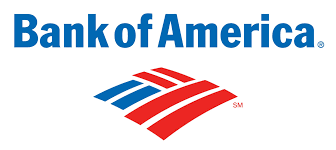美国银行公司 (BAC.US) 2025年第三季度业绩电话会
文章语言:
简
繁
EN
Share
Minutes
原文
会议摘要
Bank of America reported record Q3 earnings with 11% revenue growth to $30 billion and 21% EPS increase to $1.06. Highlights include robust net interest income, strong investment banking and trading performance, and a 21% rise in consumer banking earnings. The company maintained sound credit quality, returned $7.3 billion to shareholders, and emphasized strategic investments in technology and talent. Future growth prospects were outlined, with an upcoming Investor Day to provide deeper insights.
会议速览
Bank of America kicks off its Q3 earnings call, welcoming participants and directing them to the investor relations section for documents. The call features a brief overview from management, followed by a detailed financial review from the CFO. Forward-looking statements and non-GAAP measures are discussed, with risks and reconciliations detailed in accompanying materials.
Bank of America reported robust Q3 earnings with significant revenue and EPS growth, attributing success to organic expansion, a diversified business model, and strong performance across lending, deposits, and fee-based services. The bank highlighted its world-class deposit and lending capabilities, consistent organic growth, and the benefits of a diversified business model. It also emphasized investments in technology, talent, and client experience, which have translated into strong financial results and market share gains. The company plans to return substantial funds to shareholders through dividends and share repurchases and is set to discuss future strategies at the upcoming Investor Day.
The dialogue highlights robust revenue growth, particularly in sales, trading, investment banking, and asset management fees, which outpaced expense growth, showcasing efficient expense management. It also emphasizes improved asset quality and provision expenses, alongside organic growth in loans and deposits, driven by client engagement and strategic investments across various business segments.
The dialogue highlights significant growth in consumer banking, including increased checking accounts and noninterest bearing deposits. It also discusses balance sheet tightening, capital improvements, and robust regulatory capital ratios, reflecting a strong financial position and disciplined growth strategy.
The dialogue discusses Q3 financial achievements, emphasizing growth in loans and deposits, a 9% increase in net interest income (NII) year-over-year, and expectations for further NII growth in Q4 and 2026, driven by core loan and deposit expansion and fixed-rate asset repricing.
The dialogue highlights the company's expectation of strong operating leverage in Q4, with expenses remaining stable compared to Q3. It emphasizes disciplined expense management, particularly in compensation, benefits, occupancy costs, and technology. The company has successfully reduced headcount from a peak, supporting efficiency and growth while making strategic additions.
The dialogue emphasizes robust asset quality with reduced net charge-offs and non-performing loans, alongside impressive consumer banking results featuring revenue growth, enhanced net income, and improved efficiency ratios, showcasing the firm's financial stability and effective strategic management.
The dialogue highlights the company's strategic investments in high-tech and high-touch services, resulting in increased digital engagement, expansion into new markets, and growth in consumer investment balances. Notable achievements include the opening of new financial centers, improvements in credit card loss rates, and strong profitability in wealth management, marked by significant AUM flows and operating leverage.
Private bank added 5400 net new relationships, deepening existing ones, achieving 63% of clients with banking products, and record revenue of 6.3 billion. Global banking saw a 12% year-over-year net income increase to $Ed billion, driven by investment banking fees up 500 basis points, with advisory, debt, and equity underwriting growing significantly. Digital account openings surged, reflecting successful investments. Notable loan growth and disciplined pricing strategies contributed to performance, alongside maintaining market share and participating in major transactions.
Global markets achieved strong revenue and earnings, with sales and trading performance driving growth. Credit products improved, especially in Asia, while trading costs increased. Lending opportunities from high-quality assets benefited the firm. The effective tax rate was lower due to tax credits, excluding which it would be closer to the normal corporate rate.
Instructions are given on how to ask questions and withdraw from a call using a telephone keypad. A reminder is provided that the webcast was uninterrupted and will offer a call replay for those who experienced issues.
Discussion highlights AI's potential as an efficiency driver, emphasizing its impact on reducing manual functions and improving margins. The importance of proper data management and controlled environments in AI implementation is underscored, with examples of successful AI applications in customer service and institutional settings. The dialogue concludes with optimism about AI's role in future revenue growth and market share expansion.
A financial model perfected over years is now being implemented, leading to a 50% increase in consumer checking balances. This strategic shift, combined with the leverage it provides, is contributing to strong year-over-year results. The company is proud of its team's efforts in managing growth and maintaining stability.
Despite the typically slower fourth quarter, the company anticipates a positive environment in investment banking and sales trading, citing increased pipeline activity and strategic investments in technology, people, and balance sheet, driven by global market conditions and client repositioning.
The discussion revolves around the expectation of deposit beta pass-through across different business segments in response to Federal Reserve rate cuts, emphasizing full pass-through in wealth management and client-based approaches in global banking, with a note on the delayed impact of September's rate cut on quarterly numbers.
Discussion centered on the impact of paying down expensive wholesale funding, expected to improve net interest yield gradually over the next year, with cautious growth in earning assets anticipated.
Discusses the rationale behind maintaining a high capital buffer, considering potential reductions in GCI surcharges and ongoing reforms, and evaluates the feasibility of lowering the buffer in line with long-term targets.
Discusses plans to manage capital efficiently, aiming to exceed regulatory minimums, emphasizing organic growth and potential rule adjustments for optimal capital utilization.
Discusses UBS's plan to sustain and increase its return on tangible common equity (ROTCE) through NII growth, organic platform expansion, fixed rate asset repricing, and fee growth. Highlights the role of technology in managing expenses and enhancing productivity, aiming for operating leverage and improved efficiency ratios.
A discussion on enhancing efficiency ratios, predicting future revenue sources, and leveraging AI for improved operations and cost savings at a major financial institution, emphasizing human-centric AI applications and technology investments.
The discussion highlights robust credit results and a prudent growth approach, emphasizing ongoing strong portfolio performance and industry-wide resilience, contrasting with exceptional 2019 benchmarks.
The discussion covers the capacity and demand for commercial loan growth, highlighting attractive spreads and returns. It also addresses retail deposit trends, emphasizing the focus on high-quality operating deposits and the normalization post-pandemic, with an expectation for growth in the consumer segment.
Discussion covers the impact of potential interest rate drops on net interest income, emphasizing the company's sensitivity to short and long-term rates. Guidance is provided on the medium-term outlook for net interest margin, with updates on quarterly performance and future projections.
The dialogue focuses on clarifying guidance for net interest income (NII) growth, projecting a 5-7% increase in 2026 over 2025, attributed to core growth, fixed-rate asset repricing, and future rate cuts. It also discusses expense management, anticipating expenses to remain flat in the next quarter, contingent on revenue outcomes, with an emphasis on providing a holistic view of financial projections.
The dialogue highlights a positive outlook for investment banking and sales trading, noting a constructive environment and good pipeline. Seasonality is acknowledged for sales and trading, with overall market conditions seen as critical. Emphasis is placed on long-term management of these businesses, with further details to be shared at an upcoming Investor Day.
The dialogue discusses the persistence of high consumer deposit levels since the pandemic, attributing the stability to economic growth and core deposit share gains. The speaker highlights the bank's efficiency improvements and reduced costs, which have contributed to profit growth despite the larger economy. They also note the industry's deposit growth aligning with economic expansion, with no signs of significant outflows from the banking system.
HSBC focuses on high-quality clients, diversified collateral, and robust underwriting to achieve impressive commercial loan growth without compromising on risk. The strategy involves working with top financial institutions, utilizing high-quality, diversified collateral pools, and structuring deals with security and performance triggers, resulting in a low-loss, investment-grade portfolio that enhances returns.
Discusses the sustainability of capital markets and investment banking revenue growth, highlighting the importance of a holistic customer relationship approach and the less volatile nature of markets business, even in stable economic conditions.
A company representative thanks the team for a successful quarter, highlighting strong earnings, returns, and operating leverage across businesses. The focus shifts to upcoming events, expressing gratitude to shareholders and concluding the call with an invitation to an investor day.
要点回答
Q:What were the key financial results for the third quarter?
A:The key financial results for the third quarter include revenue of $29 billion, up 8% year over year; EPS of $1.62, up 8% year over year; operating leverage of 28.2 billion; an efficiency ratio below 40%; a return on assets of 149 basis points; and $1.3 billion of investment income, up 19% driven by the strong Maryland private bank.
Q:What was the return on assets and how did it contribute to the financial performance?
A:The return on assets reached 149 basis points, which contributed to the financial performance by demonstrating strong profitability and asset quality, underpinning the bank's financial results.
Q:How did consumer banking perform in the third quarter?
A:Consumer banking delivered $12 billion in after-tax earnings, up 20% year over year, with 73 basis points of operating leverage. It experienced strong revenue growth and disciplined expense management, gained more core operating accounts, had an investment income of $1.3 billion, and saw strong lending with $12 billion in loan growth.
Q:How did NII perform in the third quarter, and what is the bank's outlook for the future?
A:NII in the third quarter was $15.2 billion, up 9% from the third quarter of 2024. The bank expects fourth quarter NII to be in the higher end of the previously provided range of $15.5 to $15.7 billion, representing approximately 8% growth from the fourth quarter of 2024. Despite interest rate cuts and an uncertain rate environment, the bank remains optimistic about meeting its expectations.
Q:What is the significance of the 10-quarter trend of average deposits?
A:The significance of the 10-quarter trend of average deposits is that it illustrates the bank's consistent growth across deposit balances over the periods, which is an important indicator of the bank's ability to attract and maintain client relationships.
Q:What are the anticipated effects of asset roll-off and replacement on NII?
A:The anticipated effects of asset roll-off and replacement on NII are that the assets will be replaced with new ones yielding Ed to Ed basis points higher, which should result in full year NII growth somewhat similar to 2025 performance over 2024.
Q:How are expenses expected to behave in the upcoming quarter?
A:Expenses are expected to remain roughly in line with the prior quarter's Q3 expenses, with a focus on compensation and benefits, occupancy costs, and technology as the key drivers. The company manages headcount closely to ensure the right balance of managers and teams, with disciplined approach supporting both efficiency and growth.
Q:What trends are expected in total net charge-offs?
A:It is expected that total net charge-offs will not change much in the near term, given steady consumer delinquency trends, stability of CNI, and reductions in CRE exposures. The focus remains on total net charge-offs and the reduction of reservable, criticized, and non-performing loan metrics.
Q:How did consumer banking perform in terms of revenue, net income, and return on allocated capital?
A:Consumer banking delivered strong results, with script script in revenue up year over year and 3.4 billion in net income or 28% growth. Return on allocated capital rose to 30%. These results underscore the value of the deposit franchise and the success of the company's organic growth strategy and digital banking capabilities. The performance was driven by innovation and disciplined pricing, resulting in a 9% year-over-year increase in net interest income and more than 1 Ed basis points of operating leverage.
Q:What were the highlights of the consumer banking segment?
A:Highlights of the consumer banking segment included strong digital engagement, investments in both high tech and high touch, expansion into new markets, and support in local communities. Consumer investment balances grew script to $500 billion, and average balance per new account was up 10% from last year. Consumer net charge-offs improved following a decline in delinquencies, and the loss rate decreased, contributing to an improved risk-adjusted margin on credit card approaching 7.5%.
Q:What are the key achievements in the wealth management business?
A:The wealth management business delivered a strong quarter with improved profitability, marked by a 19% year-over-year increase in net income to nearly $1.3 billion. This was driven by new household growth, strong AUM flows, loan growth, and disciplined expense management that produced meaningful operating leverage and a 31% return on allocated capital.
Q:What was the impact of AI on the company's efficiency and margins?
A:The impact of AI on the company's efficiency and margins was not directly quantified in the transcript. However, the speaker implies that AI is a potential efficiency driver and could lead to better margins in the future, suggesting that it will continue to be implemented and managed to reinvest the same expense basis and grow revenue faster. The technology and AI are expected to provide constant leverage and have already led to millions of customer interfaces, thus improving efficiency and potentially leading to better margins over time.
Q:What are the recent trends in consumer checking balances and how does it impact the NII?
A:Consumer checking balances have increased by 50% over the past five years, which leverages the consumer business and contributes to strong year-over-year results in NII.
Q:How does the current investment banking activity and pipeline look, and what is the impact of recent trade and tax certainty?
A:Investment banking activity has seen a pickup in the third quarter and is expected to benefit from more certainty around trade and tariffs, as well as tax decisions. The pipeline is up over double digits, and the environment in global markets, particularly M&A, appears constructive.
Q:What investments have been made in the investment banking department?
A:Significant investments have been made in middle markets, international operations, and in an earlier-stage, faster-growing economic profile, contributing to the growth in investment banking.
Q:How is the sales and trading business expected to perform in the fourth quarter, and what is the constructive environment mentioned?
A:Although there is a seasonal impact due to client activity slowing in Q4, the constructive environment for sales and trading remains as investors continue to reposition based on rates and policies, suggesting a continued positive outlook.
Q:What are the expectations for deposit beta in various businesses in response to potential changes in Fed rates?
A:The firm intends to maintain disciplined pricing in response to future rate cuts, similar to how they handled rate increases, with the exception that the September rate cut's impact will not be seen in Q4 numbers but in the following quarter.
Q:How many quarters is it expected that the balance sheet will remain relatively flat with the current wholesale funding approach?
A:It is a focus to keep the balance sheet relatively flat over time, and net interest yield is expected to improve as net interest income increases and the balance sheet does not grow as fast as loans and deposits due to the reduction of wholesale funding.
Q:What is the current thinking on the capital buffer and how does it affect the company's capital levels?
A:The target is to hold capital script basis points over the regulatory minimums, and the company aims to keep working down towards that target. The current quarter's flat ratios are due to extra earnings, and the company has plans to continue using organic growth to manage capital levels.
Q:Is it anticipated that the company will sustain a return on tangible common equity (ROTC) near or at the peer targets mentioned?
A:It is anticipated that the company's return on tangible common equity will continue to improve and approach the targets set by peers like Wells Fargo and JP Morgan, with plans to discuss this at the upcoming Investor Day.
Q:What is the strategy to manage expenses and efficiency in light of the upcoming efficiency ratio improvements?
A:The company aims to manage expenses and headcount effectively, with technology being utilized to allow more work with the same or fewer people. Expenses are driven by the number of teammates and their productivity, and there is an expectation to manage the expense base differently going forward.
Q:How is AI being applied at Bank of America, and what are the potential savings and transformative impacts?
A:AI at Bank of America is applied in customer interactions and is expected to improve efficiency, with a dedicated team demonstrating the work being done. The focus is on enhanced intelligence rather than artificial intelligence, and the company is optimistic about the paybacks and transformational impacts of AI.
Q:What are the company's current plans and observations regarding market changes?
A:The company is not observing any major changes in the market except for continued strong performance in the credit portfolios. They are not planning to change anything and are actively considering whether any adjustments are needed based on team discussions and observations.
Q:How is the company positioned in the banking industry?
A:The company is positioned well in the banking industry, demonstrating growth and solid credit results. They are one of the 30 banks that go through comprehensive credit stress tests and are in a strong shape as per industry statistics.
Q:What comparisons are being made to the year 2019 and why are they significant?
A:The company is comparing their performance to the year 2019, which was a 50-year low and the best year in their company's credit history. This comparison is significant because they feel very good about their ability to grow while managing risk.
Q:What does the company's approach to loan growth and demand look like?
A:The company has substantial capacity for loan growth, with robust demand over the past few years. They are well-positioned to capitalize on opportunities due to strong relationships with asset managers and the ability to provide lending capital. They expect that demand and spreads will continue to be attractive as part of their global market strategy.
Q:How does the company's portfolio perform in terms of risk and returns?
A:The company's portfolio has a good record of risk management, with close to zero net charge-offs and investment-grade risk ratings. They have consistently seen improving returns on capital and have had excellent empirical performance from this portfolio over a long period of time.
Q:What is the company's strategy regarding retail deposit growth?
A:The company's strategy is to focus on quality rather than just increasing retail deposit growth. They are not chasing CDS and are instead looking to ensure these are high-quality operating deposits with clients that will remain loyal for the next few years. Consumer deposits have started to grow again, up 1% year over year.
Q:How does the company view the impact of lower medium to long-term rates?
A:The company views the impact of lower medium to long-term rates as having an effect on net interest income. They expect an instantaneous drop of basis points in both the long and short ends of the yield curve to affect their net interest income. However, the probability of such an event is considered low, and they will continue to monitor and guide on the impact as rates evolve over time.
Q:Are there any updates on the outlook for medium-term growth?
A:The medium-term outlook for growth remains at 2.2%, potentially higher depending on the mix of earning assets and growth. The team is focused on maintaining this growth rate, having added 140 basis points this quarter and being up over 2%.
Q:What is the outlook for net interest income (NII) in 2026 and how is it expected to grow?
A:The company expects core growth from client behavior and some boost from fixed rate asset repricing, resulting in an estimated 5 to 7% increase in NII for 2026 over 2025. The growth is expected to come from both interest rates and volume, and the company will provide updates as the year progresses.
Q:What is the projected growth for expenses in the next quarter?
A:The projected growth for expenses in the next quarter is expected to be flattish. This is based on the anticipation of revenue flatness and the headcount as the biggest part of the expense base. Expenses are expected to be somewhat stable despite potential variability in revenue.
Q:How is the company's capital markets backlog shaping up?
A:The investment banking outlook appears good with a solid pipeline, and the company expects to execute well in the fourth quarter. The sales and trading business is also in a constructive environment. The overall position is positive, with a good start to the quarter, but market conditions could influence outcomes.
Q:What factors have contributed to the increase in core transactional deposits and reduction in branch numbers?
A:The increase in core transactional deposits and reduction in branch numbers were attributed to the company's focus on gaining share in the consumer business, with an average of $9,000 per account. This was achieved through digitization and automation, which also led to a reduction in the number of teammates dedicated to consumer service, thereby improving operating leverage.
Q:Why has the company not seen a significant outflow of deposits despite economic growth?
A:The company has not seen a significant outflow of deposits despite economic growth because the amounts of cash in circulation and the notional economy have grown, making it expected. The focus has been on growing with the economic growth and taking market share, which has been achieved without compromising on risk.
Q:What risk management strategies have been employed to ensure the responsible growth of the company?
A:To ensure responsible growth, the company focused on clients, specifically the top set managers or financial institutions globally. The strategies included seeking high-quality collateral, diversified across multiple sectors, with structures that have security, credit enhancement, performance triggers, and marking to market. The goal was to have a diversified book that is typically investment grade with low loss content.
Q:How does the company ensure sustainable growth in its capital markets businesses?
A:The company ensures sustainable growth in its capital markets businesses by having a strong focus on clients, a diversified book of business that is mostly investment grade with low loss content, and by deploying capital effectively while increasing return on capital. The revenue from the global markets business is supported by the results from these investments and the company's commitment to responsible risk management.
Q:What factors contribute to the stability and sustainability of the company's investment banking business?
A:The stability and sustainability of the company's investment banking business are contributed to by a combination of factors. The business benefits from having strong, long-term relationships with clients, a diverse and high-quality collateral base, and a business model that focuses on moving assets rather than holding large amounts of risk. This has led to a revenue stream that is more stable and has allowed for consistent year-over-year revenue growth, even in the face of varying market conditions.

Bank of America Corp.
Follow





